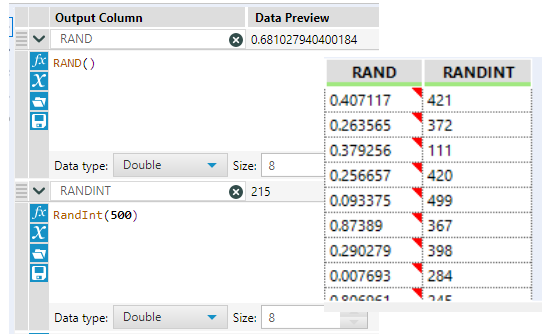

This layer contains derived tables and views which create data similar to what would be seen in the application that you are testing. The base data layer contains the dummy data tables, any data generation scripts, and a sequence or sequences for generating Ids. These layers can be within different schemas within the database. The solution is broken into a number of layers. Child – Parent relationships are created by including the parent id in a Cartesian product with the child data (See below).ĭiagram 1 - Populating the Application databaseĭiagram 2 - Use of Synonyms where changes to the application database are not allowed. Id values are generated using a sequence. Using the generated dataset this gives 8,000,000 (10 x 10 x 1000 x 4 x 20 x 1) rows of data. datetime, character and numeric.ĭata is generated by creating Cartesian joins on the tables. If you wanted data that was only based on data type and had no other meaning you could classify the tables by data type e.g. Some tables are reused to generate street names and post codes. The scripts below create a number of tables for storing different data descriptors, e.g. The scripts and methodology allow sample data to be generated. The purpose of this article is to provide a means of generating random data which can be inserted into a database for testing purposes. This caused a lot of rework after GO-Live which in turn affected the perception of quality of the project as a whole. We didn’t have enough data to test response times or to tune SQL until after GO-Live. The database was a third party database and the vendor wouldn’t allow data to be entered via the back end. You can spend many nights playing with these parameters, and obtain different databases that can produce trends and exceptions you can analyze for your demos.I have worked on a number of projects where there hasn’t been enough data to test reports and extracts and other database applications. The transactions generated in the Sales table are not entirely random: there are parameters used to control the distribution of transactions over products, customers, stores, and time. You can customize all these files and produce any content you want. We added stores and customers using other files obtained by random data generation services. The content of the database is based on the Microsoft Contoso sample database. You must be a C# developer to partake in this game.
#DUMMY DATA GENERATOR CODE#
Customize the C# code of the tool to implement new features. There is a Visual Studio solution with a C# project running in.You must alter configuration files and the PowerShell scripts.

#DUMMY DATA GENERATOR DOWNLOAD#
Just download from the latest release: Contoso databases with different sizes are already available for download.

You can customize the database generated in size and data distribution, developing your version of the Contoso database.
#DUMMY DATA GENERATOR GENERATOR#
Contoso Data Generator is a free open source tool to generate sample Contoso databases on SQL Server based on a star schema.


 0 kommentar(er)
0 kommentar(er)
